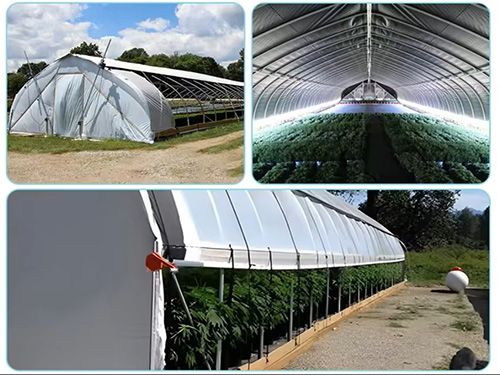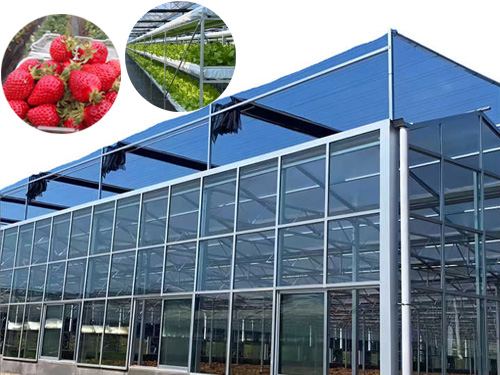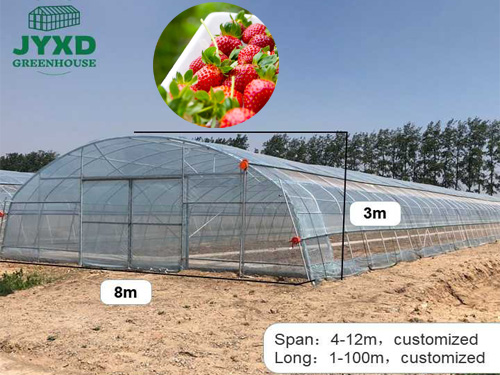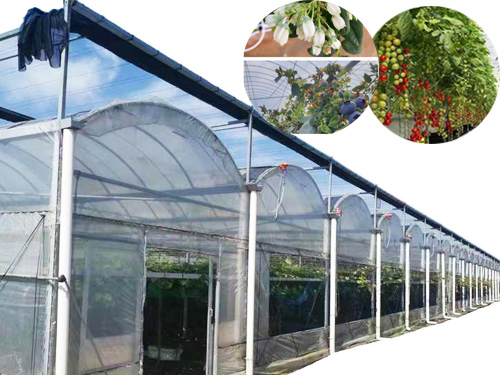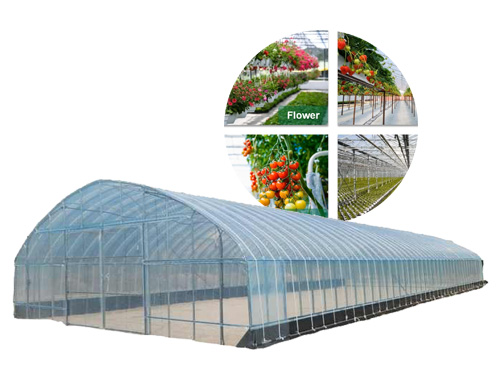NEWS DETAILS
NEWS INFORMATION
Greenhouse Farm ROI Calculation: Crop Yield Analytics & Operational Cost Reduction Tactics
AUTHOR:jyxd-greenhouse DATE:2025-04-17 00:19:43 HITS:74
Maximizing return on investment (ROI) is a top priority for greenhouse farm operators. Achieving this requires a deep understanding of crop yield analytics and effective strategies for reducing operational costs. By leveraging data-driven insights and implementing cost-saving measures, growers can optimize productivity, minimize expenses, and boost profitability. This article explores how to calculate greenhouse farm ROI, the role of crop yield analytics, and practical tactics for reducing operational costs.
Why ROI Calculation Matters in Greenhouse Farming
Understanding ROI helps growers:
· Evaluate Profitability: Assess the financial performance of their operations.
· Identify Opportunities: Pinpoint areas for improvement in crop yields and cost management.
· Make Informed Decisions: Allocate resources effectively to maximize returns.
· Attract Investors: Demonstrate financial viability to secure funding or partnerships.
1. Calculating Greenhouse Farm ROI
ROI is calculated as the ratio of net profit to total investment, expressed as a percentage. Here’s the formula:
ROI = (Net Profit / Total Investment) × 100
Components of ROI Calculation:
· Net Profit: Total revenue minus total costs (e.g., labor, utilities, materials).
· Total Investment: Initial and ongoing costs (e.g., greenhouse construction, equipment, seeds).
Example Calculation:
· Revenue: $500,000 (from crop sales).
· Total Costs: $350,000 (including labor, utilities, and materials).
· Net Profit: 500,000−350,000 = $150,000.
· Total Investment: $1,000,000 (greenhouse construction and equipment).
· ROI: (150,000/1,000,000) × 100 = 15%.
2. Leveraging Crop Yield Analytics
Crop yield analytics involves collecting and analyzing data to optimize plant growth and productivity. Here’s how it can improve ROI:
Key Metrics to Track:
· Yield per Square Foot: Measure crop output relative to greenhouse space.
· Growth Rate: Monitor plant development to identify bottlenecks.
· Resource Efficiency: Analyze water, fertilizer, and energy use per unit of yield.
Benefits of Crop Yield Analytics:
· Optimized Growing Conditions: Adjust factors like light, temperature, and humidity for maximum yields.
· Data-Driven Decisions: Identify high-performing crops and allocate resources accordingly.
· Predictive Insights: Forecast yields and plan harvests to meet market demand.
Tools for Crop Yield Analytics:
· Sensors: Monitor environmental conditions (e.g., temperature, humidity, light).
· Software: Use platforms like Cropio or AgSquared to track and analyze data.
· Automation: Integrate with climate control systems for real-time adjustments.
3. Operational Cost Reduction Tactics
Reducing operational costs is essential for improving ROI. Here are practical strategies to minimize expenses:
Energy Efficiency:
· LED Grow Lights: Use energy-efficient lighting to reduce electricity costs.
· Insulation: Install thermal blankets or double-layered covers to retain heat.
· Renewable Energy: Invest in solar panels or geothermal systems for sustainable power.
Water Management:
· Drip Irrigation: Deliver water directly to plant roots, minimizing waste.
· Rainwater Harvesting: Collect and store rainwater for irrigation.
· Recycling Systems: Reuse water from dehumidifiers or condensate.
Labor Optimization:
· Automation: Use automated systems for tasks like irrigation, climate control, and harvesting.
· Training: Invest in staff training to improve efficiency and reduce errors.
· Scheduling: Optimize work schedules to minimize overtime and labor costs.
Supply Chain Efficiency:
· Bulk Purchasing: Buy seeds, fertilizers, and materials in bulk to reduce costs.
· Local Suppliers: Source inputs locally to lower transportation expenses.
· Inventory Management: Track inventory to avoid overstocking or shortages.
4. Case Studies: ROI Improvement in Action
Tomato Greenhouse in Spain:
· Challenge: High energy costs and inconsistent yields.
· Solution: Installed LED grow lights and drip irrigation systems.
· Result: Increased yields by 20% and reduced energy costs by 30%, achieving an ROI of 18%.
Lettuce Farm in the USA:
· Challenge: Labor-intensive operations and water waste.
· Solution: Implemented automation and rainwater harvesting.
· Result: Reduced labor costs by 25% and water usage by 40%, boosting ROI to 22%.
Herb Greenhouse in the Netherlands:
· Challenge: High operational costs and low resource efficiency.
· Solution: Used crop yield analytics and renewable energy systems.
· Result: Improved resource efficiency by 35% and achieved an ROI of 20%.
5. Best Practices for Maximizing ROI
To ensure sustainable profitability, follow these best practices:
Set Clear Goals:
· Define Objectives: Establish measurable targets for yields, costs, and ROI.
· Track Progress: Regularly review performance metrics to stay on track.
Invest in Technology:
· Adopt Automation: Use automated systems to reduce labor and improve efficiency.
· Leverage Data: Analyze crop and operational data to identify opportunities for improvement.
Focus on Sustainability:
· Eco-Friendly Practices: Implement energy-efficient and water-saving measures.
· Long-Term Planning: Invest in solutions that provide long-term benefits, such as renewable energy.
Engage Stakeholders:
· Train Staff: Educate employees on cost-saving practices and efficient workflows.
· Collaborate with Experts: Work with consultants or agronomists to optimize operations.
Conclusion
Calculating ROI and implementing strategies to improve crop yields and reduce operational costs are essential for maximizing profitability in greenhouse farming. By leveraging crop yield analytics, adopting energy-efficient technologies, and optimizing resource management, growers can achieve sustainable and profitable operations. Whether you’re a small-scale grower or a commercial operator, these tactics will help you make informed decisions and boost your greenhouse farm’s ROI.
For more expert tips and high-quality greenhouse solutions, visit our website and take your farming practices to the next level. Let’s grow smarter and cultivate a greener future together!
![]()
Meta Description: Learn how to calculate greenhouse farm ROI using crop yield analytics and operational cost reduction tactics. Discover strategies for maximizing profitability and sustainability.
Hebei Juyou Xinda Greenhouse Facilities Co.,Ltd.
Copyright © 2024-2025 https://www.jyxd-greenhouse.com. All Rights Reserved Hebei Juyou Xinda Greenhouse Facilities Co.,Ltd.Copyright





 Current Location:
Current Location:


